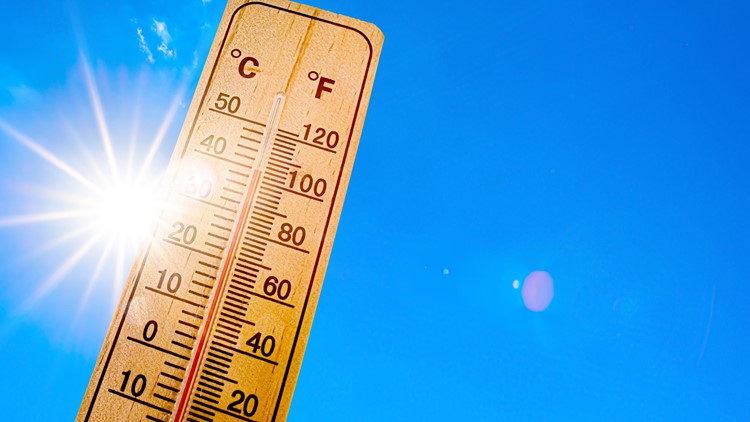NORFOLK, Va. — We are well into the month of August and when you step outside, you can tell.
Southeastern Virginia has been seeing temperatures in the 90s, with heat indexes sometimes reaching the triple digits.
Temperatures like the ones we have been seeing can be dangerous for both people and animals. From hot blacktop to dehydration and heat strokes, there are some health risks to keep in mind.
Luckily, there are precautions you can take in order to keep both you and your pet safe during these next few weeks.
Keeping yourself safe:
Before you can even start thinking about keeping your pet safe and healthy, you need to take care of yourself.
Whether you have a job outdoors or are just hanging out outside, it's important to drink plenty of water.
This tip seems obvious but it's easy to forget and can lead to some serious health issues.
According to the Mayo Clinic, dehydration can lead to dizziness, fatigue, confusion, and lack of energy.
After dehydration comes heat stroke, which is the "most serious form of heat injury."
If it's serious enough, heatstroke can kill or cause damage to your brain and other internal organs.
There are preventative measures you can take, though. When outdoors, try and wear light-colored, light-weight clothing that is loose-fitting. You should also try and wear a wide-brimmed hat to keep the sun off of your head and face.
Again, drink extra fluids. A general recommendation is to drink eight glasses of water a day. However, if you are going to be outside and sweating, maybe try to drink more than that.
If you can, try and make plans outdoors when the temperatures are cooler like early morning or after sunset.
In an effort to keep outdoor workers safe, OSHA has created a safety app to help protect Virginia's workers.
The app provides workers with the current heat index as well as recommendations specific to heat index-associated risk levels.
There's also information on heat-related illnesses, including their signs and symptoms.
Keeping your pet safe:
Animals need to be taken care of in the heat just as much as people do. That's why the Humane Society has an entire page on its website dedicated to keeping animals safe during hot temperatures.
According to that site, pet owners should limit their pet's exercise on hot days. Whether that's adjusting the intensity or duration of walks and runs, it's important to recognize your animal will get more fatigued faster due to hot temperatures.
The site also recommends owners not rely on fans to keep animals cool. The Humane Society said fans do not work as well on animals as they do on humans.
Make sure you provide plenty of shade and water for your animal and check pavement temperatures before walking them.
If you can't stand barefoot on the pavement comfortably, neither can your pet.
To make sure your pet is doing alright, watch for signs of heatstroke. These signs can range from excessive panting or glazed eyes to rapid heartbeat and lack of coordination.
If your pet does start to experience a heat stroke, take them into an air-conditioned space, give them plenty of water, and place ice packs or cold towels on their head, neck, and chest.



